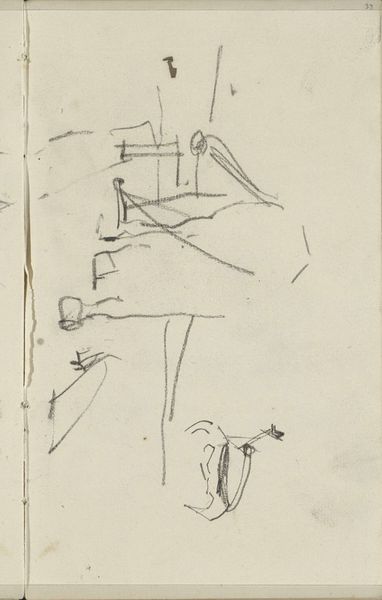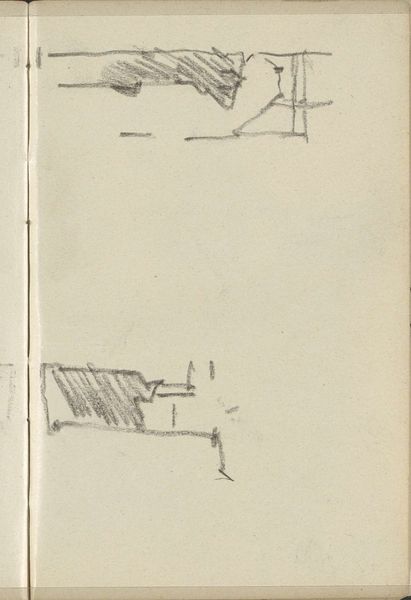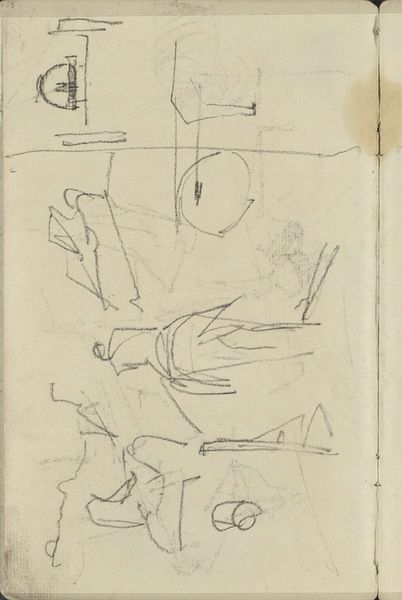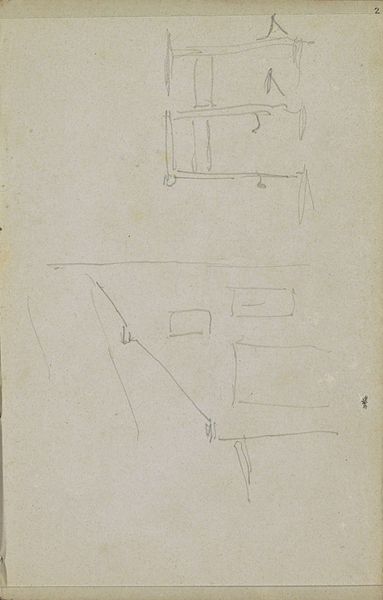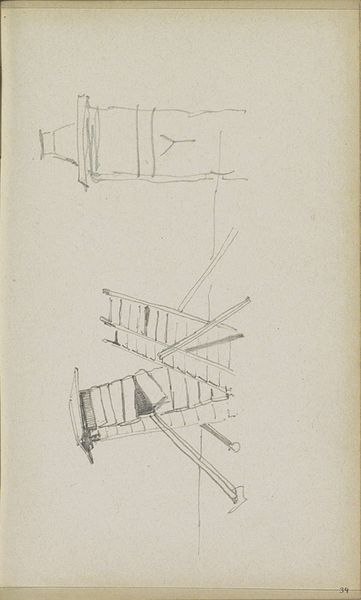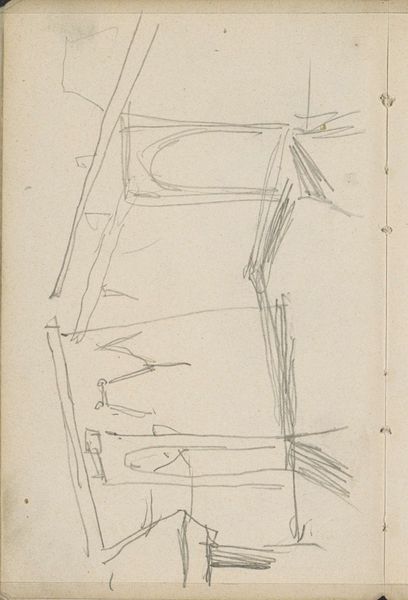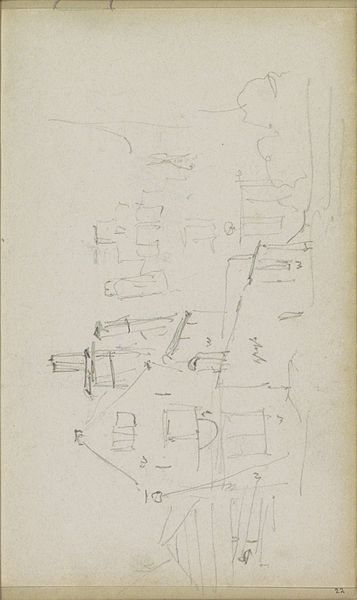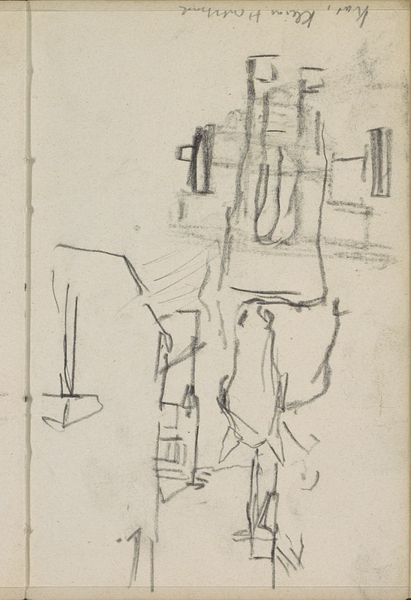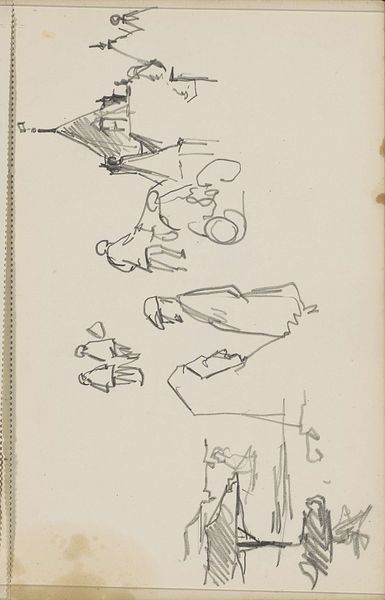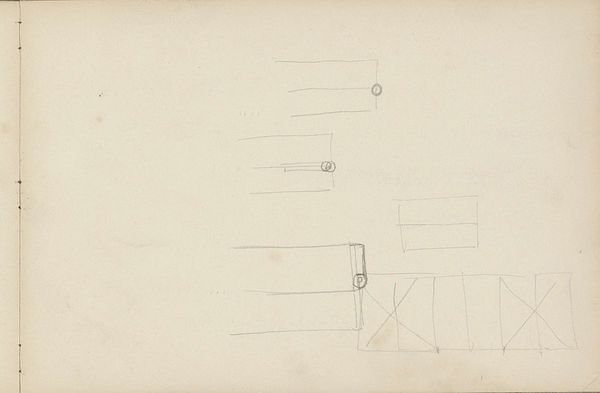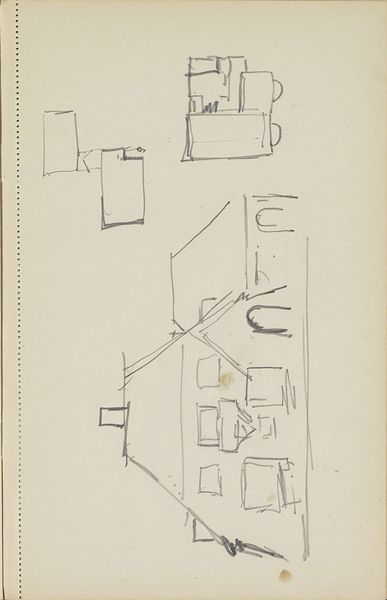
drawing, pencil
#
drawing
#
amateur sketch
#
aged paper
#
light pencil work
#
sketched
#
hand drawn type
#
personal sketchbook
#
idea generation sketch
#
geometric
#
pencil
#
abstraction
#
sketchbook drawing
#
sketchbook art
#
initial sketch
Copyright: Rijks Museum: Open Domain
Curator: Welcome. We’re looking at "Onderdelen van een machine," or "Parts of a Machine," a pencil drawing that’s held here at the Rijksmuseum, and it dates roughly from 1906 to 1945. Editor: My first impression is a sense of fragmentation. The light pencil work captures a feeling of something incomplete, like a fleeting thought. It makes me consider the artistic process here, the bare minimum needed to represent the mechanical object in question. Curator: That incompleteness you perceive speaks volumes. Consider the social climate of the time, particularly if this piece aligns more closely with the earlier part of that date range. Industrialization was booming, and there was both great hope and great anxiety tied to these new technologies and machines. This sketch may capture that ambivalence—the potential of progress, the threat of obsolescence, and worker exploitation all coalesce within these skeletal forms. Editor: Absolutely, and from a formal perspective, look at the simple geometric forms employed here. The artist is distilling these complex mechanisms into their most basic shapes: the rectangle, the cylinder, and the implied circle. It almost has an instructional air about it. It brings into mind some kind of textbook and I’m very curious as to why, or how to reconcile the stark nature with any underlying social anxiety. Curator: Perhaps it reflects an attempt to understand and control the rapidly changing world through deconstruction. Notice how each "part" exists in isolation on the page, there's a breakdown of systems here. Could the machine in this drawing represent an increasingly fragmented society, where individuals felt disconnected from labor and purpose as labor became more automated? This piece, especially when situated with the era in which it was made, could well be considered political. Editor: That’s a strong reading! And a persuasive one. For me, I'm intrigued by the light, almost tentative line-work – it seems to suggest a level of abstraction and personal investigation happening here. Even though there is, in theory, no 'right' answer, what we decide to observe is telling, not only of the drawing itself, but the socio-cultural framework with which we interpret that art. Curator: Indeed. There are many ways of reading this art piece. Editor: This has certainly changed my perspective of how this seemingly simplistic picture has profound underlying commentary.
Comments
No comments
Be the first to comment and join the conversation on the ultimate creative platform.

